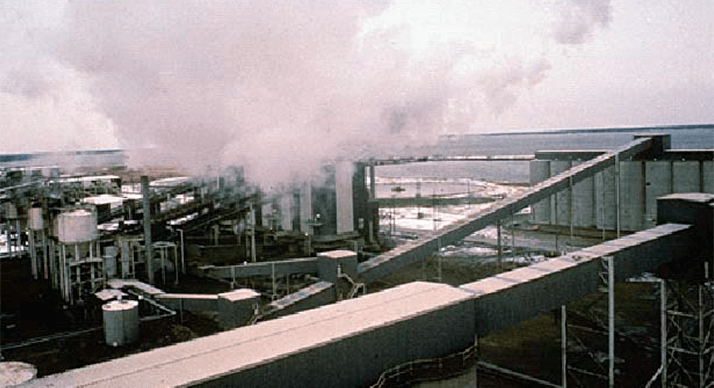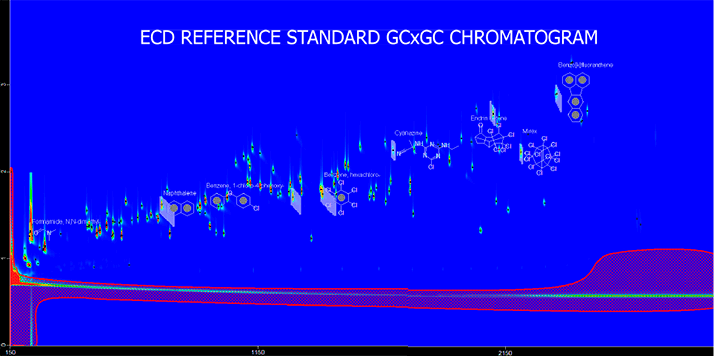Introduction
Endocrine-disrupting compounds (EDCs) encompass a variety of chemical classes, including drugs, pesticides, polymer additives, coatings materials, personal consumer products, industrial by-products, and pollutants. There is worldwide concern over long-term environmental exposure to EDCs leading to serious health effects, including a range of reproductive problems such as reduced fertility, male and female reproductive abnormalities, skewed male/female sex ratios, brain and behavior problems, impaired immune functions, and various cancers.

 Image courtesy of US Fish and Wildlife Service Digital Public Library
Image courtesy of US Fish and Wildlife Service Digital Public LibraryThis application note presents a robust, broad-range analysis for the detection of EDCs in impacted natural waters using comprehensive two-dimensional gas chromatography–time-of-flight mass spectrometry (GCxGC -TOFMS). GCxGC facilitates enhanced detection, chromatographic resolution, and peak capacity, while TOFMS allows the fast acquisition (up to 500 spectra per second) necessary to successfully acquire the data density needed to fully characterize low levels of targeted and untargeted compounds in complex samples. A reference standard of 108 known endocrinedisrupting compounds was prepared and analyzed. Methods for solid-phase extraction and GCxGC-TOFMS analysis were developed. GCxGC-TOFMS analysis was conducted on multiple water samples from a rural and urban Midwestern U.S. watershed. Extraction of 1.0 liter water samples was conducted using Supel-Select HLB SPE cartridges (Supelco Analytical, Sigma-Aldrich) designed to recover a wide range of analytes. Subsequent analysis was conducted by GCxGC-TOFMS, and the data was processed using ChromaTOF's reference feature. The results are reported as targeted and untargeted analytes found. This application note presents a practical, robust, sensitive, and reliable procedure for the detection of EDCs in urban and rural watersheds.
Results
A total of 13 duplicate one-liter water samples were analyzed from six different urban and rural locations along a Midwestern river watershed. The results from the analysis indicated 102 chemicals detected, including endocrine disruptors, personal care products, pharmaceuticals, and other industrial pollutants. The data show that out of 26 GCxGC-TOFMS analyses, 81% of the 102 chemicals detected were found at least five times.
 Figure 1. The two dimensional contour plot chromatogram above shows the 108 component endocrine disruptor reference standard used to develop the SPE extraction procedure and GCxGC-TOFMS method. The on-column concentration for each component is 5 nanograms.
Figure 1. The two dimensional contour plot chromatogram above shows the 108 component endocrine disruptor reference standard used to develop the SPE extraction procedure and GCxGC-TOFMS method. The on-column concentration for each component is 5 nanograms.Table 1 shows the results for 13 one-liter water samples prepared with solid-phase extraction and analyzed by GCxGC-TOFMS. A total of 102 chemical compounds were detected from six point sources in a Midwestern watershed. The compounds detected matched the reference standard with at least a 60% library match similarity. Endocrine-disrupting compounds (EDCs) encompass a variety of chemical classes, including pharmaceuticals, pesticides, polymer additives, coatings materials, personal care products, flame retardants, plasticizers, industrial by-products and miscellaneous pollutants.





